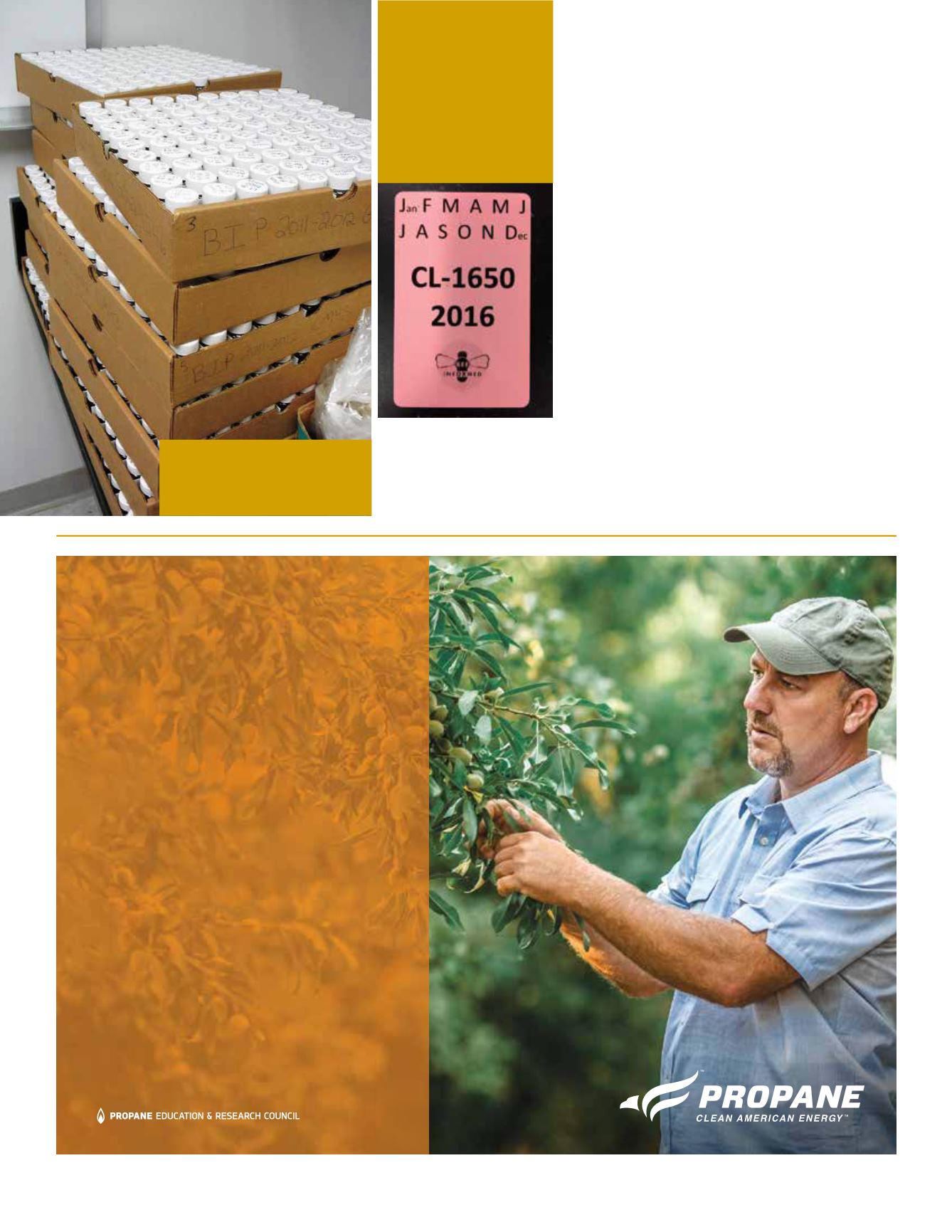
JANUARY | FEBRUARY 2017
Almond Facts
31
then relabel. We also print all the colony tags
that are used to identify the colonies that we
sample and follow longitudinally.
We can process more than 100 samples per
day and have reduced the turnaround time,
from when we receive the samples to when the
reports are sent, out to four days. This rapid,
near real-time reporting is invaluable to the
beekeeper who is waiting to make a decision,
based on these data, to treat his colonies for
mites or nosema.
To do all this takes a team that is well-trained
and committed to doing the critical analysis
that is required. Although a research lab, ours
is also very much like a commercial lab with
streamlined procedures and protocols and an
adherence to accuracy and consistency. The
key to making this all work is a level of dedication by our staff. Despite
taking our job very seriously, we also make it as enjoyable as possible.
Music and laughter are not incompatible to hard work.
Archived samples awaiting vacuum
packing for long term storage at the
University of Maryland.
Photo courtesy
of the Bee Informed Partnership Inc.
Colony bee tag. These are the
size of a credit card and the
information is printed right
on the tag. It is then stapled
to the lowest brood box of
the sampled colony.
Photo
courtesy of the Bee Informed
Partnership Inc.


